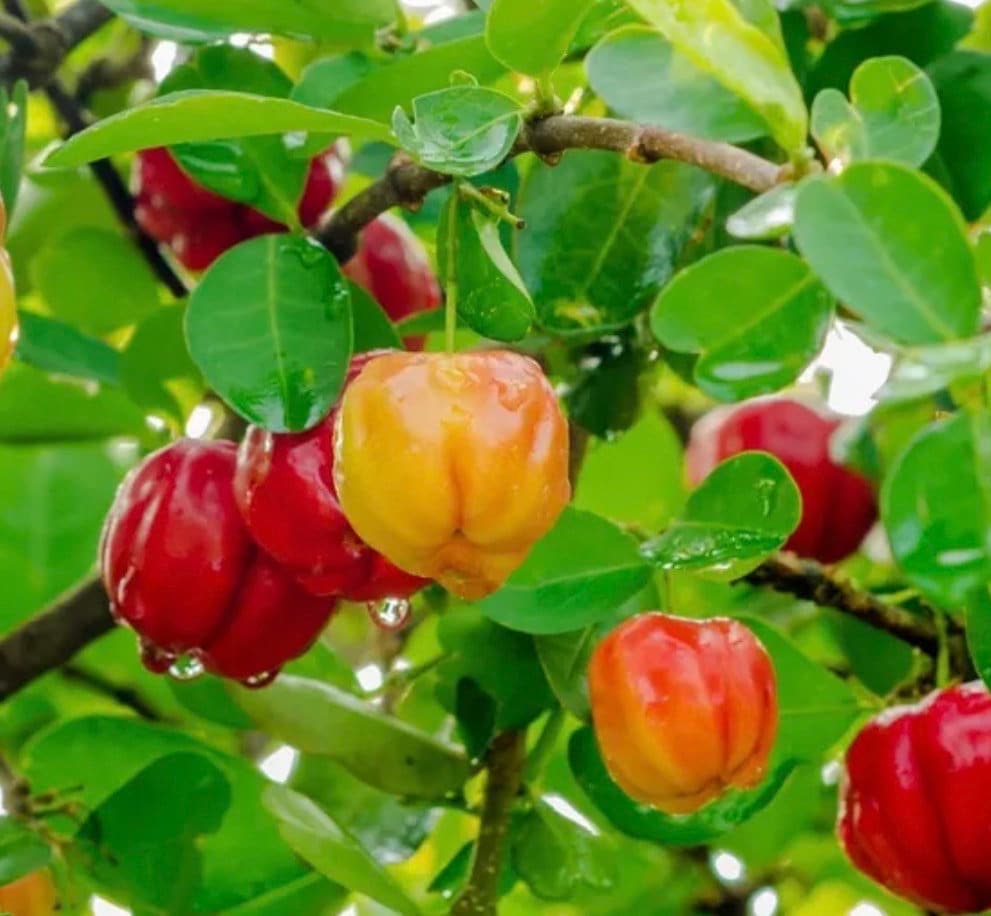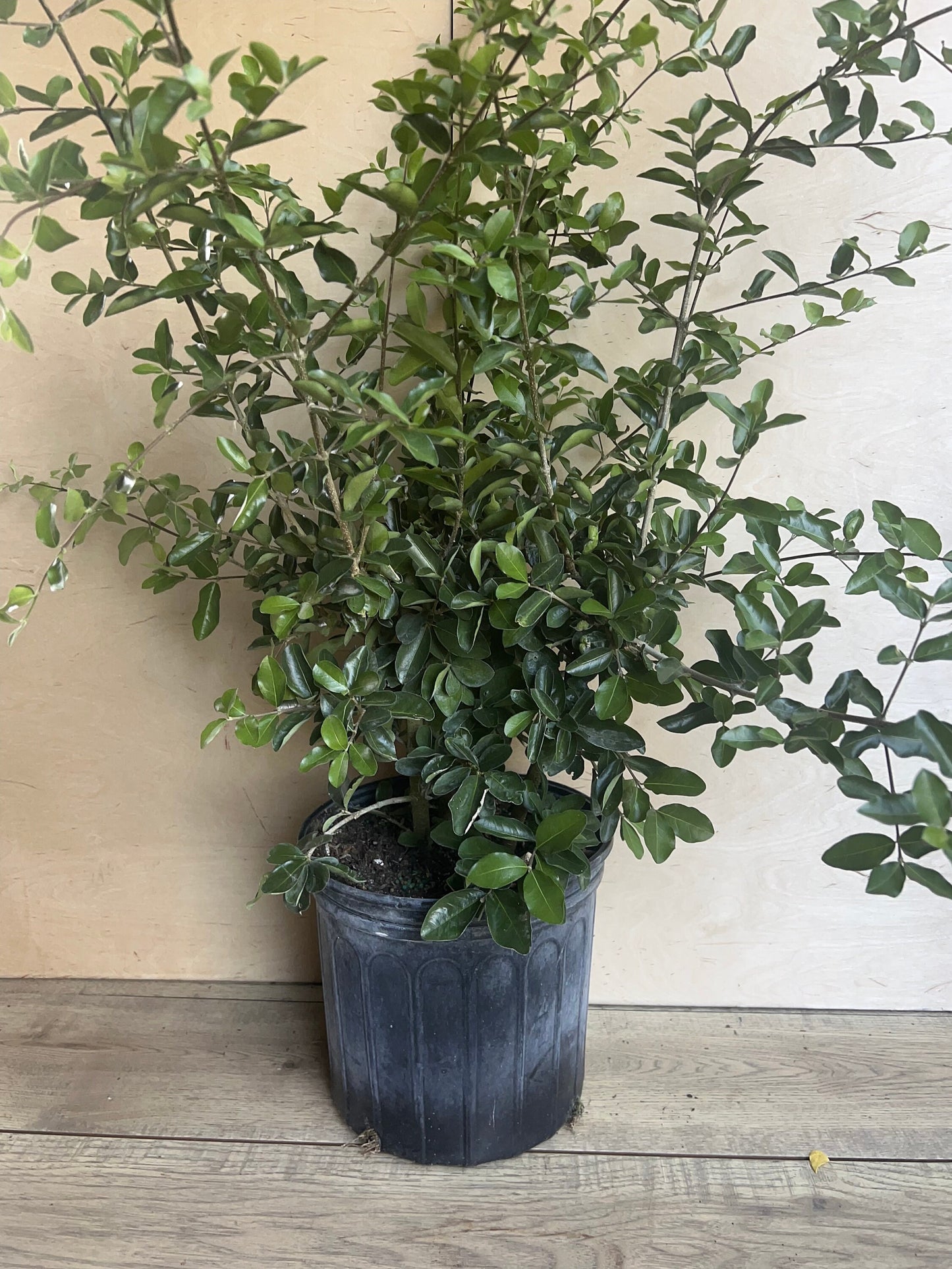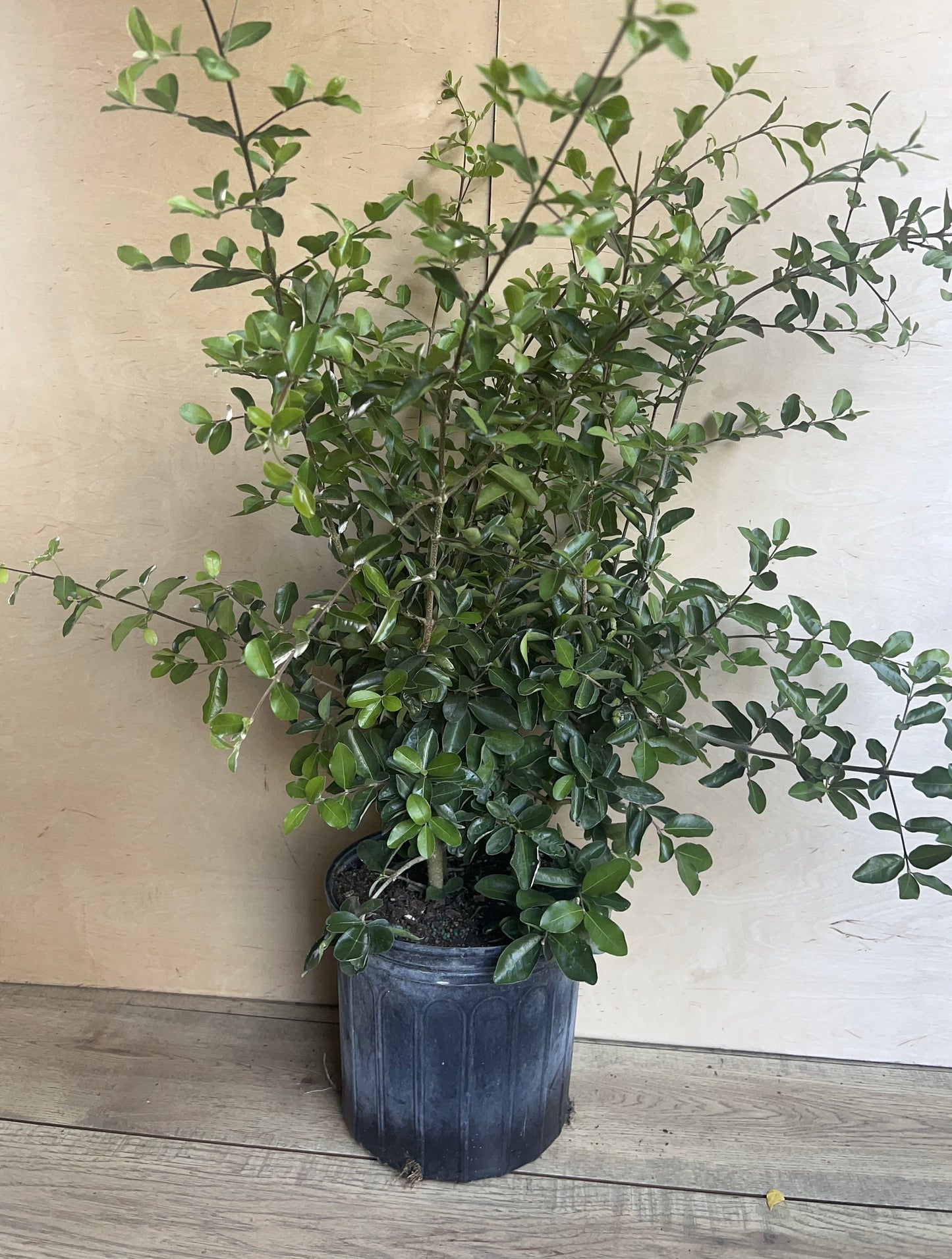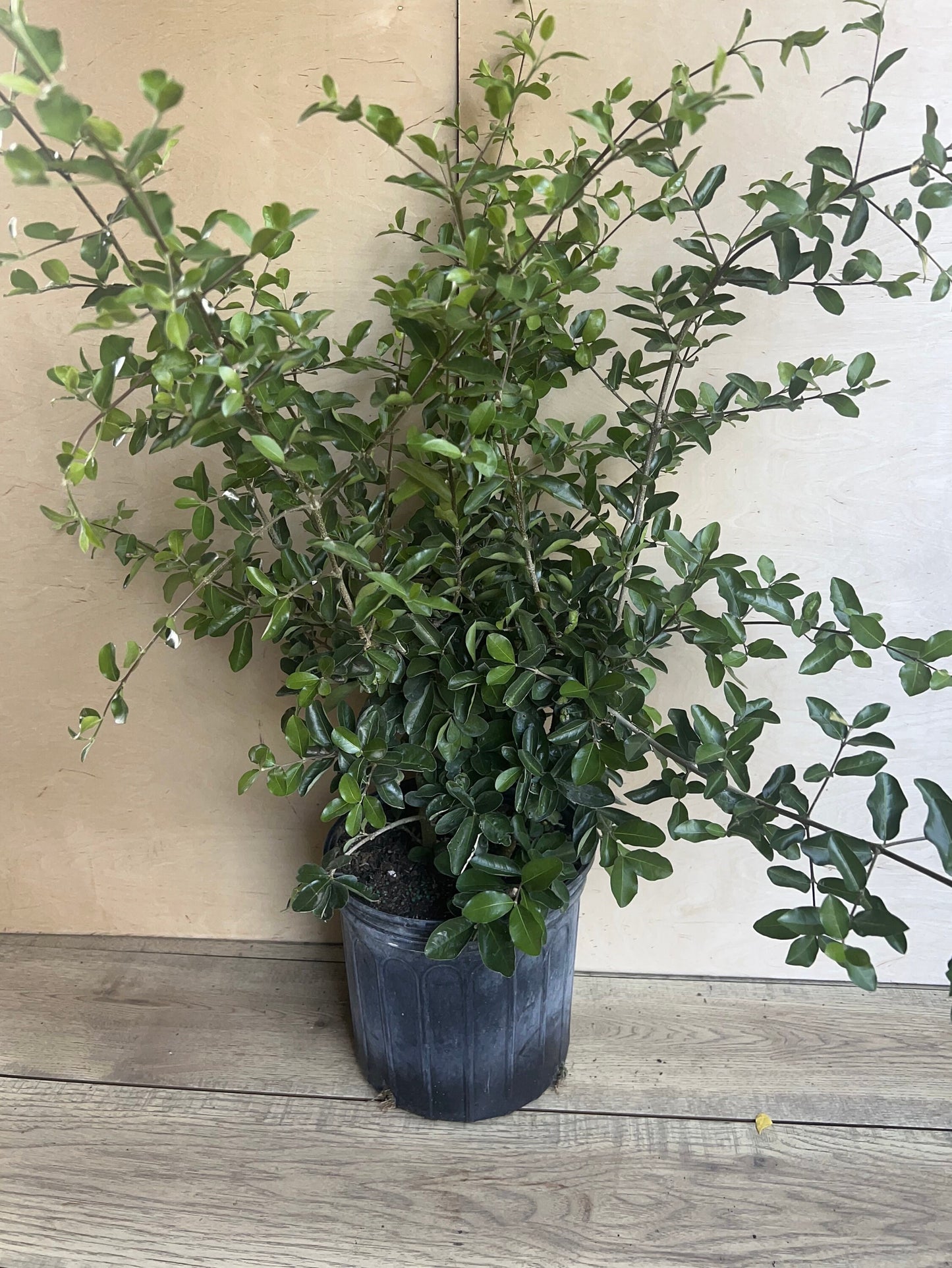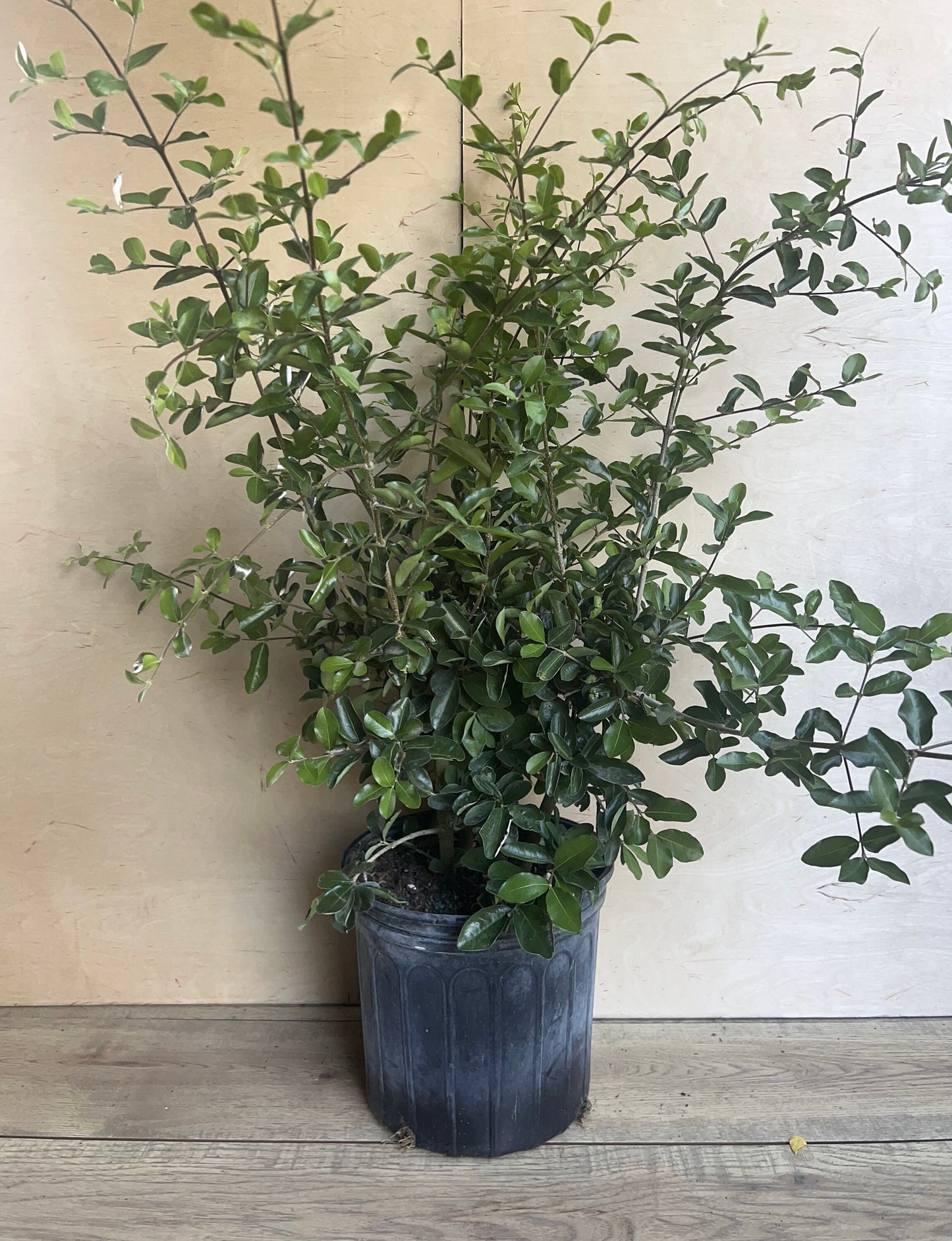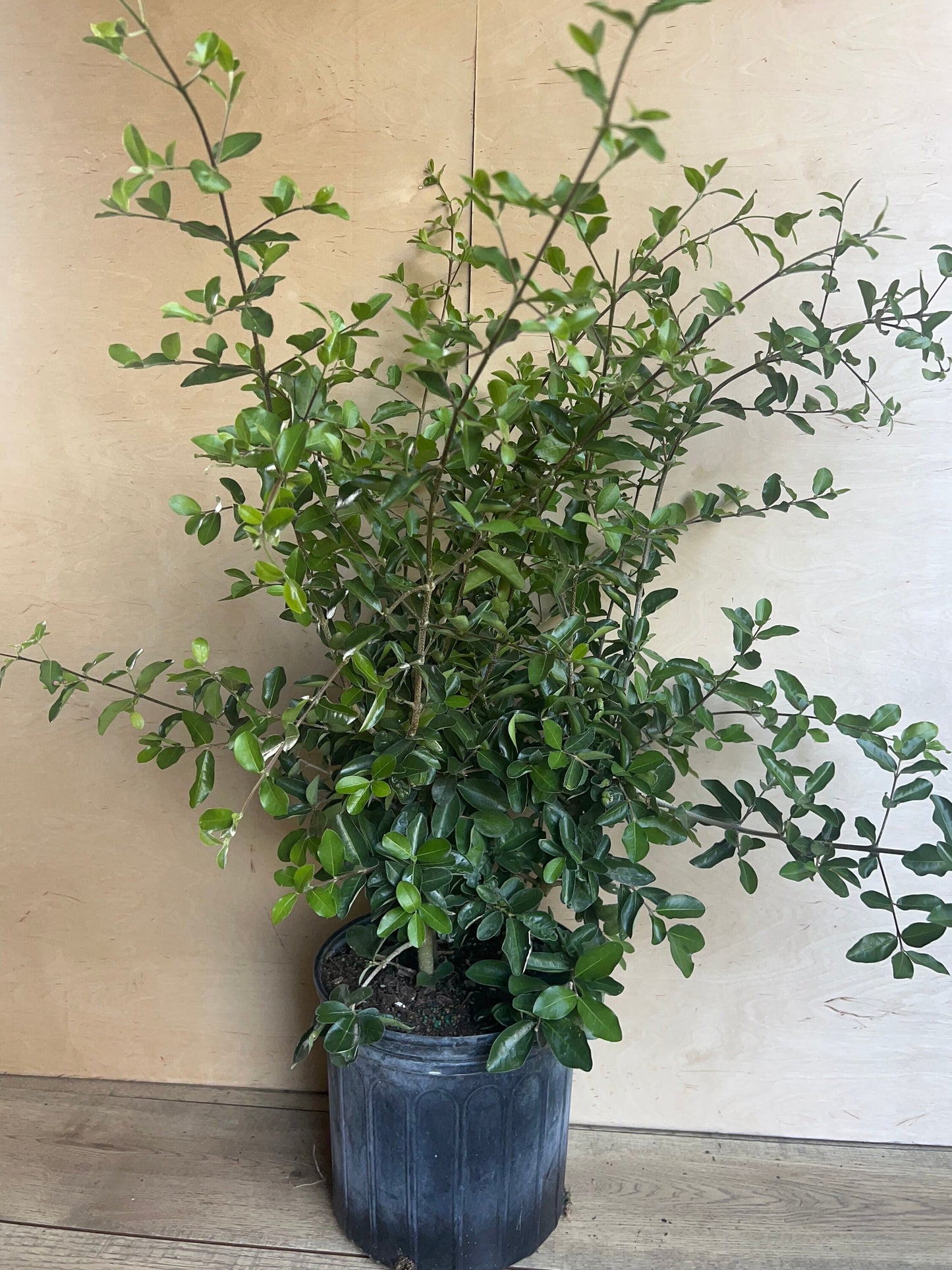Acerola Cherry, Barbados Cherry Plant in 10" Pot, No Ship to CA and HI
Acerola Cherry, Barbados Cherry Plant in 10" Pot, No Ship to CA and HI
Couldn't load pickup availability
Acerola Cherry (Malpighia emarginata) is a tropical fruit tree renowned for its bright red or yellow cherries packed with vitamin C, containing much higher levels than oranges. Native to the Caribbean and South America, the Acerola tree grows 3 to 10 feet tall, with lush green foliage and delicate pink or white flowers. These flowers give way to tart, clustered cherries that are ideal for juices, jams, and smoothies. The fruit is highly nutritious, rich in antioxidants, and offers numerous health benefits. Acerola thrives in tropical climates with full sun, well-draining soil, and regular watering, making it a favorite among fruit enthusiasts.
Light Requirements: Acerola cherries thrive in full sun, needing 6-8 hours of sunlight daily for optimal growth and fruiting. For indoor growth, place the tree near a south-facing window to provide ample light.
Watering: These trees require consistent watering without waterlogging. Water thoroughly when the top 1-2 inches of soil are dry, ensuring proper drainage to prevent root rot. In drier climates or indoor settings, increase humidity using a humidifier or humidity tray.
Soil Requirements: Acerola trees prefer well-draining, loamy, or sandy soil enriched with organic matter. The soil pH should be slightly acidic to neutral (6.0-7.0). Amend the soil with compost if needed to enhance fertility and structure.
Temperature and Humidity: Ideal temperatures range from 75°F to 95°F. Acerola cherries are not frost-tolerant and need protection from temperatures below 50°F. They thrive in humid conditions, typical of tropical areas.
Fertilizing: Use a balanced, slow-release fertilizer, such as a 10-10-10 formula, every 6-8 weeks during the growing season. Reduce fertilization in fall and winter when growth slows. Over-fertilizing during dormancy can hinder fruit production.
Pruning and Maintenance: Prune lightly in early spring to remove dead or damaged branches and maintain shape. Regular pruning promotes airflow and light penetration, reducing disease risk. For container-grown trees, prune frequently to manage size.
Pests and Diseases: Acerola trees can attract pests like aphids, whiteflies, and spider mites, especially in dry conditions. Treat infestations with insecticidal soap or neem oil. Fungal diseases like powdery mildew and root rot are common in humid environments. Avoid overhead watering and ensure good soil drainage to prevent fungal issues.
Pollination: Acerola cherries are self-pollinating, but cross-pollination by bees can improve fruit yield. For indoor trees, hand-pollination with a small paintbrush can aid in fruit production.
Harvesting: The cherries ripen 3-4 weeks after flowering and should be picked when fully colored and slightly soft. Handle the fruit gently to avoid bruising, and consume or process it immediately, as it has a short shelf life.
Repotting: For container-grown trees, repot every 2-3 years to prevent root binding. Use a pot 1-2 sizes larger with good drainage and replace old soil with fresh, fertile soil.
The Acerola Cherry tree is low-maintenance, thriving in warm temperatures and humid conditions. Its vibrant cherries, rich in vitamin C, make it a highly rewarding plant for any fruit enthusiast. With proper care, this tropical tree will provide delicious, nutritious fruit year after year.
Share
